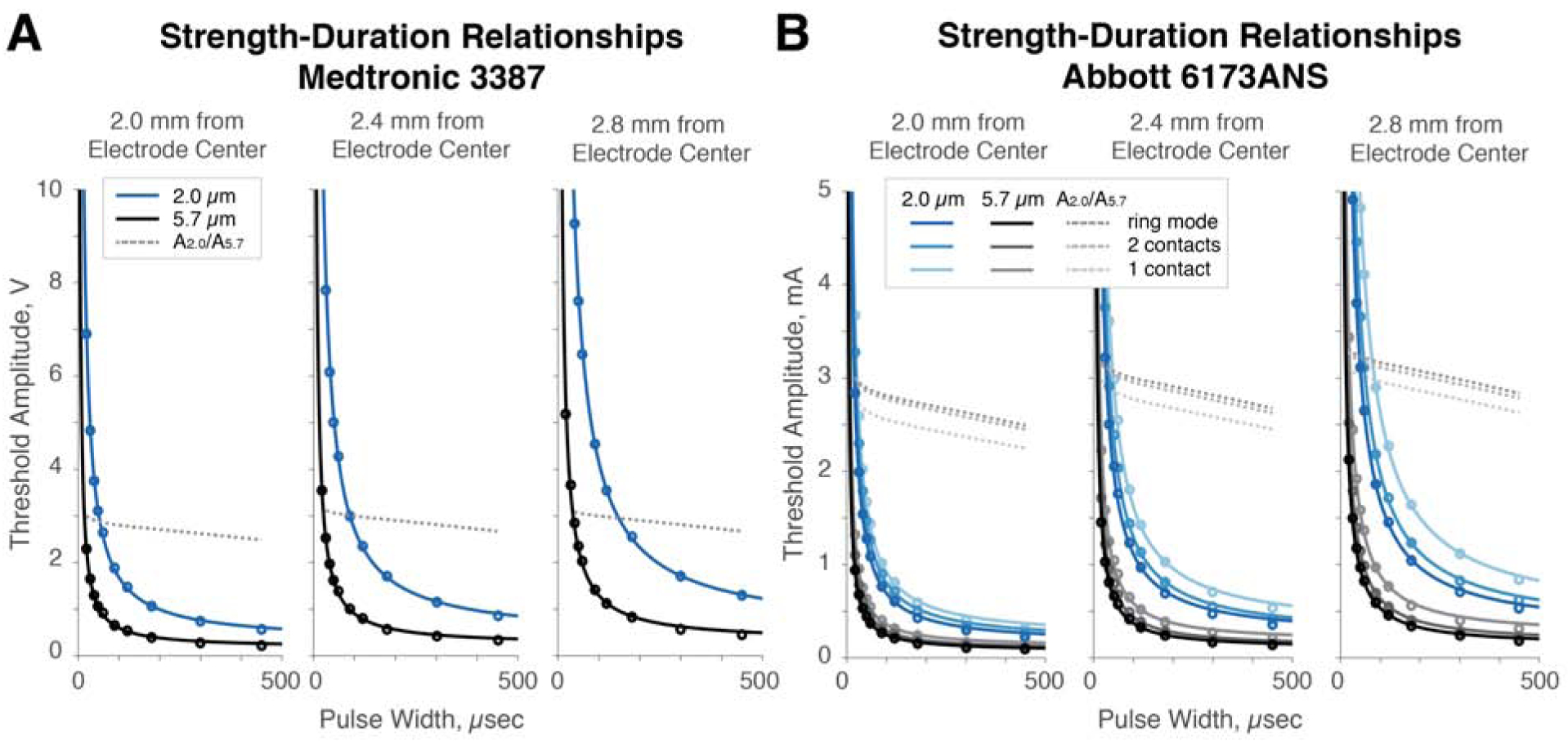Figure 2:

Strength-duration curves reveal that long pulse widths, proximity to electrode, and small, segmented contacts reduce preferential selectivity for large fibers. A. We derived strength-duration relationships for 5.7 and 2.0 μm fibers at 2.0 and 3.2 mm from the electrode center given a Medtronic 3387 electrode. Computing the ratio of the amplitudes needed to activate 2.0 vs 5.7 μm fibers (A2.0/A5.7), we find that the preferential selectivity for the large fiber decreases with distance. Further, increasing the pulse width decreases this preferential selectivity. B. We derived similar relationships for 5.7 and 2.0 μm fibers at the same distances with an Abbott 6173 electrode given the use of ring mode, two, and one segmented contacts. Similar results were found as in A; further, using fewer segmented contacts decreased the preferential selectivity for large fibers.
